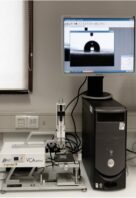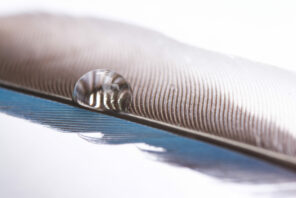Contact angle measurement Surface tension analysis
Contact angle measurement is used to determine the ability of a liquid to wet the surface of a solid. The shape that a drop takes on a surface depends on the surface tension of the fluid and the nature of the surface (chemistry, roughness).
- If the contact angle with water is less than 90°, the surface is hydrophilic.
- If the contact angle with water is greater than 90°, the surface is hydrophobic. Very hydrophobic surfaces (e.g. fluorinated) can have contact angles of up to 120°.
- Some surfaces with particular roughness can have contact angles with water greater than 150°, these surfaces are superhydrophobic
Examples of application
- The contact angles are extremely sensitive to surface contamination and are therefore an excellent indicator of the cleanliness or oxidation state of the sample.
- It is possible to determine the surface energy of a solid from measuring the contact angle of several different liquids.
- Measuring the hysteresis, the difference between the forward and reverse angles, provides information about the surface texture.
- Measuring the hysteresis, the difference between the forward and reverse angles, provides information about the surface texture.
- Measure water contact and dynamic angle of several coated material samples using using a DROP SHAPE ANALYSIS DSA10-MK2 (KRUSS).

